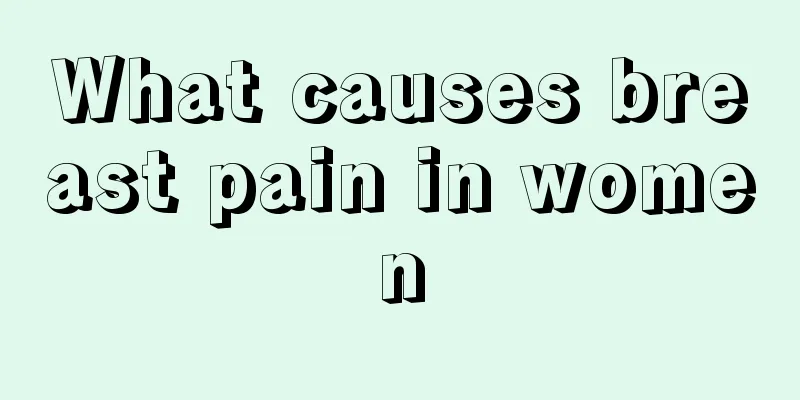More than 5 million primary and secondary school students in my country suffer from this disease. What should children and parents do when faced with scoliosis?

|
CCTV News once reported that after obesity and myopia, scoliosis has become the third most common disease among children and adolescents in my country. According to the preliminary epidemiological survey data of the Spine Disease Prevention and Control Committee of the Chinese Preventive Medicine Association, combined with authoritative magazines and domestic expert consensus, it is estimated that the number of primary and secondary school students in my country with scoliosis has exceeded 5 million. This topic quickly became a hot search topic. Today we specially invited Yuan Wangshu from the Department of Rehabilitation Medicine of Peking Union Medical College Hospital to unveil its mysterious veil for everyone. What is scoliosis? As the name suggests, it refers to the sideways curvature of the spine, but only when the curvature is greater than 10°, we define it as "scoliosis". There are many types of scoliosis, such as idiopathic, congenital, neuromuscular, etc. The most common type of scoliosis is idiopathic scoliosis, which accounts for about 80% of scoliosis families. The cause of idiopathic scoliosis is still unclear. It can occur at any age, but because adolescents grow and develop rapidly, the risk of scoliosis progression is also greater, so adolescent idiopathic scoliosis has received more attention from clinical and social circles. (This article mainly introduces idiopathic scoliosis) What are the dangers of scoliosis? Scoliosis has many harmful effects, the first of which is the impact on aesthetics - uneven shoulders, razor back, asymmetrical waistline... This also leads to the next harm - psychological problems. Scoliosis often occurs in teenagers. During adolescence, they are very concerned about their personal image and are more prone to psychological fluctuations. Scoliosis will bring them serious psychological burden. Some children are even afraid to communicate with the outside world and wrap themselves tightly in the summer for fear that others will see their "imperfections." Severe scoliosis may cause pain and discomfort in the lower back and may rarely affect spinal cord function, leading to incomplete paraplegia or paraplegia. Can scoliosis be prevented? Unfortunately, there is no definitive answer yet. In other words, we currently have no way to prevent it. Because idiopathic scoliosis refers to scoliosis of unknown cause, since the cause is unknown, there is no way to prevent it. Now many people want to prevent it by improving posture or doing physical exercise, but this is just a beautiful vision and is actually unrealistic. There is often a misunderstanding: we attach great importance to patients' posture and exercise training in clinical practice, and poor posture or insufficient exercise may be the cause. In fact, the reason why this is done clinically is that after a patient has scoliosis, it is very likely that the scoliosis will worsen or progress too quickly due to poor posture or lack of exercise, so we must not blame children for having scoliosis because they are "lazy", unwilling to move or have bad posture. Everyone has the chance of getting idiopathic scoliosis, but the risk of worsening or progressing varies, so we should still pay attention to correct posture and physical exercise. How to deal with idiopathic scoliosis? ——Early detection and early treatment Although we cannot prevent scoliosis, we can detect it as early as possible. "Early detection and early treatment" is the basic treatment principle of scoliosis. At present, some regions have included scoliosis screening in the routine physical examinations of primary and secondary school students, so parents must pay attention to their children's physical examination reports. If there is a risk of scoliosis, they must take their children to the hospital to confirm whether intervention is needed. For areas where there is no physical examination screening, parents do not need to worry. We can conduct simple home self-examination to detect scoliosis. After all, it is better to rely on ourselves than on others. Children's spinal health management is a compulsory course for parents. Now I will teach you how to conduct a self-examination of scoliosis at home: When conducting a self-examination at home, the child is required to take off his or her shirt (bare-chested), pull down his or her pants to reveal half of his or her buttocks, go without shoes, and stand naturally facing a white wall. The first step is for the parent to stand directly behind the child and observe whether the child’s shoulders are at the same height (normally they should be at the same height). The second step is to observe whether the lines on the left and right sides of the child’s torso are symmetrical (normally they should be symmetrical). The third step is to check whether the child's 7th cervical vertebra (the 7th cervical vertebra is the most protruding large bone behind the neck when the child lowers his head as much as possible) is directly above the buttocks (normally it should be directly above). The fourth step is to ask the child to bend over 90 degrees and observe whether the back and lower back on both sides of the spine are at the same height (normally they should be at the same height). The fifth step is for parents to look at their child from the front and observe whether the tip of the child’s nose is directly above the navel (normally it should be directly above). If three or more of these five items are abnormal, it indicates that the child may have scoliosis. Parents need to take the child to the hospital for diagnosis to determine whether further treatment is needed. Scoliosis, tips for adjusting your posture at home For children who have been diagnosed with idiopathic scoliosis, we will teach you some simple and easy-to-learn tips for adjusting your posture at home. 1. Corrective sitting posture for lumbar scoliosis Take the most common left lumbar curve as an example (Figure 1). The patient's appearance in the natural sitting position was consistent with the X-ray, with the left lumbar notch being more prominent and the right lumbar notch being more depressed ( Figure 2 ). We can ask the patient to place a book under the left hip and passively elevate the left hip. The elevation of the left hip will passively push the lumbar spine to the right, bringing the spine to a neutral or overcorrected position (Figure 3). The height of the book is determined by self-feeling and the symmetry of the lumbar notch. The higher the book is, the more overcorrection there will be; but the higher the book is, the more uncomfortable the patient will feel and the worse the sustainability will be. Therefore, the height of the book only needs to be padded to the point where the lumbar notches on both sides are symmetrical or there is a slight overcorrection on the right side, and the person feels comfortable and can maintain the state. For patients with right-sided lumbar convexity, the same idea can be used to pad the right hip. 2. Corrective standing posture for lumbar scoliosis Let’s take the common left lumbar curve as an example (Figure 4). The patient's appearance in the natural standing position was consistent with the X-ray, with the left lumbar notch being more prominent and the right lumbar notch being more depressed (Figure 5). We can ask the patient to raise his left heel (raise the left hip). The elevation of the left hip will passively push the lumbar spine to the right, bringing the spine to a neutral or overcorrected position (Figure 6). Alternatively, the patient can support the left leg and bend the right knee (similar to the at-ease position) to lower the right hip, which can also help correct scoliosis. For patients with right-sided lumbar curvature, the same idea can be used to raise the right hip or bend the left knee. 3. Corrective sitting posture for thoracic scoliosis Let’s take the common right thoracic curve as an example (Figure 7). The patient's appearance in a natural sitting position is consistent with the X-ray, with the right thorax more prominent and the left thorax more sunken. Let the patient's hands hang naturally, the distance between the left thorax and the left upper arm is larger, and the distance between the right thorax and the right upper arm is smaller (Figure 8). Ask the patient to adjust the sitting position so that the tip of the nose is directly above the navel. Keep the arm still and use the left thorax to press as close to the left upper arm as possible, making the gap on the left side as small as possible (Figure 9). Some patients have a smaller degree of scoliosis or better flexibility, and can achieve overcorrection with slight force (appearing that the left chest is more protruding and the right chest is more sunken). However, some patients have a larger degree or poorer flexibility, and despite their best efforts, the right chest still appears to be more protruding and the left chest is more sunken. This is not a problem. We should compare ourselves with our original selves, not with others. As long as our appearance looks more symmetrical than before, the range of motion can be developed slowly. For patients with left thoracic curvature, the same idea can be used to use the right rib cage to press against the right upper arm. Everyone needs to note that the correction of scoliosis posture is not a systematic treatment. The systematic treatment of scoliosis is step-by-step. When the degree is small, we can intervene through regular observation or additional core muscle strength training. When the degree is larger, we can adopt specific training to treat it. The specific training of scoliosis needs to be targeted according to the different types of scoliosis, including self-correction, overcorrection gymnastics, daily education, passive techniques, etc. If the degree is higher, eligible patients can choose to wear a brace. Brace treatment is currently the most effective conservative treatment, with an efficacy rate of up to 72%. Severe scoliosis may require surgical treatment. Scoliosis surgery is now very advanced and safe, so there is no need to worry too much. The above is some popular science sharing about scoliosis, I hope it can help everyone. Of course, if you want to get systematic and effective treatment, you still need to go to the hospital for treatment! Young people are the flowers of the motherland and our future. In order for children to have an upright backbone, the joint efforts of parents and hospitals are needed! 丨The topic of this article is from the article "The therapeutic value of scoliosis-specific training for mild adolescent idiopathic scoliosis" in "Journal of Peking Union Medical College" 2020, 11(1) Original author: Yuan Wangshu, Shen Jianxiong, Chen Lixia, Wang Hai, Yu Keyi, Cong Hui About the author Yuan Wangshu graduated from Jilin University School of Medicine with a master's degree in rehabilitation medicine and physical therapy. Member of the International Society of Scoliosis Orthopedics and Rehabilitation Therapy (SOSORT). Member of the Medical Technology Committee of Peking Union Medical College Hospital, Standing Committee Member of the Children's Group of the Physical Therapy Committee of the Chinese Rehabilitation Medicine Association, and Member of the Professional Committee of Orthopedic Rehabilitation Therapists of the Orthopedic Physician Branch of the Chinese Medical Doctor Association. Expert consultant of the "Scoliosis Relief Project" of the China Children and Teenagers Charity Relief Foundation, member of the Expert Group for Standardized Management of Rehabilitation Therapists of the Beijing Rehabilitation Medicine Association, and published more than 20 SCI and national core journals. Participated in 4 provincial and ministerial funds. Participated in the compilation of 4 books. 5 national utility model patents. Internationally certified physical therapist for conservative treatment of scoliosis by SEAS of Italy, Schorth (SBP and ISST) of Germany, BSPTS of Spain, and FITS of Poland. Official Chinese translator of SEAS of Italy. Editor: Liu Yang Zhao Na Proofreading: Li Na, Li Yule, Dong Zhe Producer: Wu Wenming Copyright Statement: PUMCH Medical Journal advocates respect and protection of intellectual property rights. Reprinting and quoting are welcome, but authorization is required. If you have any questions about the copyright of the article, please send an email to [email protected] and we will communicate with you in a timely manner. The content and pictures of this website are for reference and learning purposes only, not for profit and are not used as a basis for diagnosis or medical treatment. |
<<: What does Jerusalem artichoke look like? How to eat Jerusalem artichoke
>>: What is the difference between Jerusalem artichoke and ginger?
Recommend
Medical abortion at 10 weeks of pregnancy
Medical abortion is a common method of abortion, ...
What changes occur in the body when a stroke "strikes"?
Your browser does not support the video tag Strok...
What are the benefits of eating peach gum for women
Peach gum is a resin that is oily and a viscous l...
Pregnant women want to eat sour food
During pregnancy, women usually experience "...
Is it really easy to be a housewife? Five types of housewives are most likely to develop diabetes
Diabetes is a very common disease in modern socie...
Can I go back to work after four days of abortion?
A large number of women do not want the baby afte...
Is it normal for pregnant women to snore when they sleep?
After a pregnant woman becomes pregnant, there ar...
Tea oil can eliminate stretch marks
Stretch marks are a concern for every new mother....
Is O-type blood "universal blood"? Can it be transfused at will? Don't be fooled again...
Expert of this article: Yan Kaixin, Master of Car...
Four reasons why women choose to masturbate, men don't read
Both men and women will masturbate in their lives...
What are the effects of jogging for a month for girls?
In life, many people will improve their body'...
What are the seven small movements to promote the fetus into the pelvis?
When a pregnant woman reaches the late stage of p...
Reasons for heavy menstrual flow in the second month after abortion
Abortion has a great impact on women's physic...









